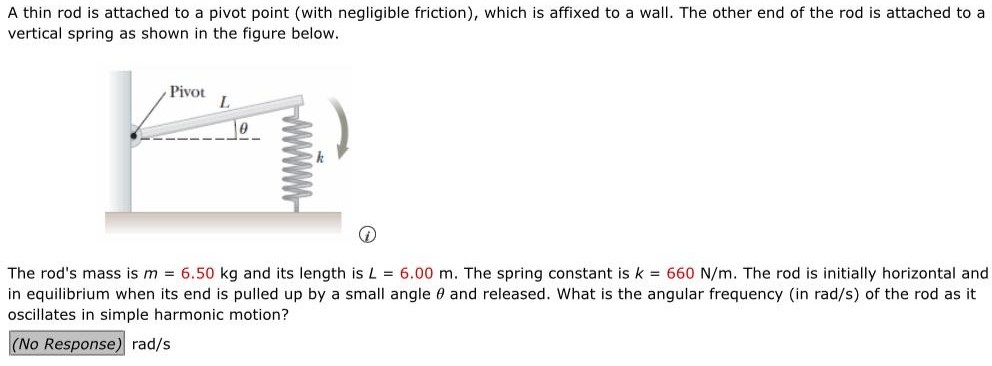A thin rod is attached to a pivot point (with negligible friction), which is affixed to a wall. The other end of the rod is attached to a vertical spring as shown in the figure below. (i) The rod's mass is m = 6.50 kg and its length is L = 6.00 m. The spring constant is k = 660 N/m. The rod is initially horizontal and in equilibrium when its end is pulled up by a small angle θ and released. What is the angular frequency (in rad/s) of the rod as it oscillates in simple harmonic motion? rad/s
